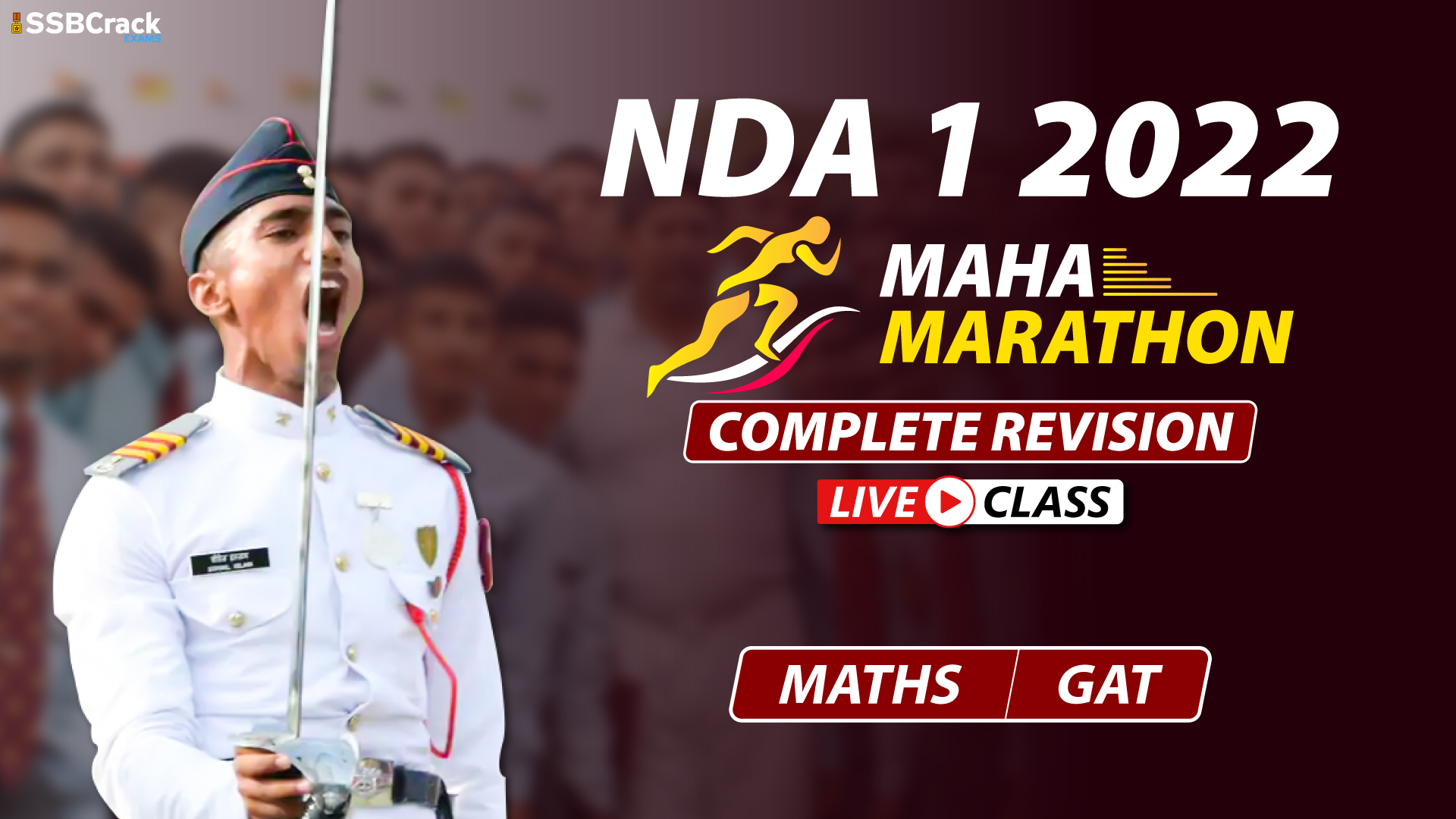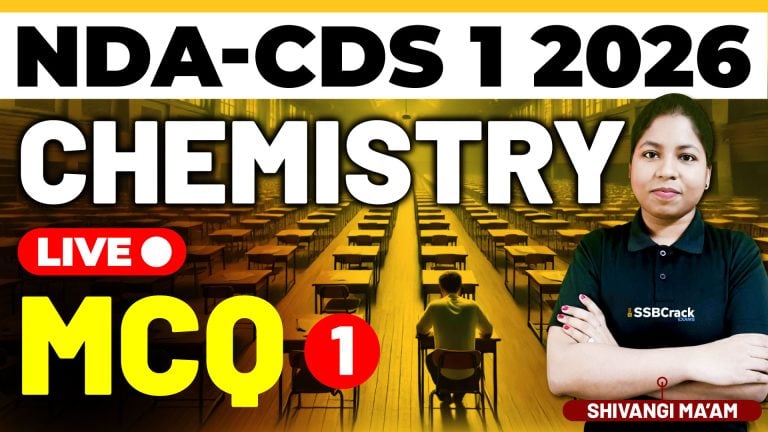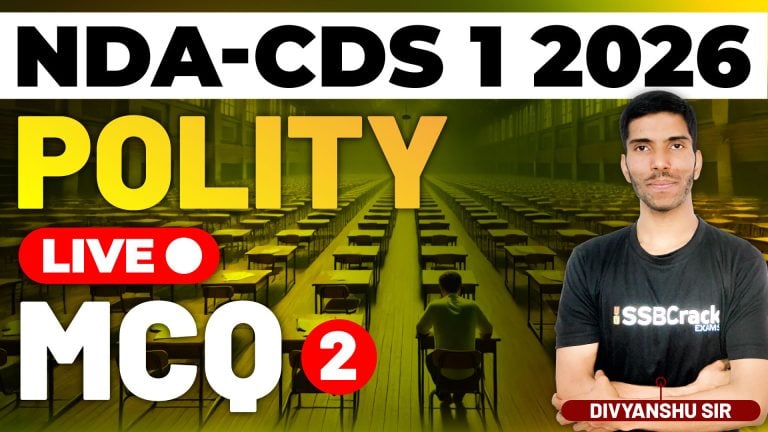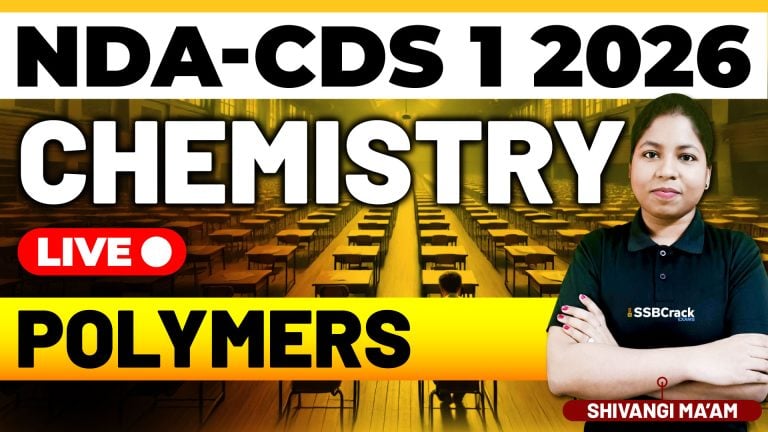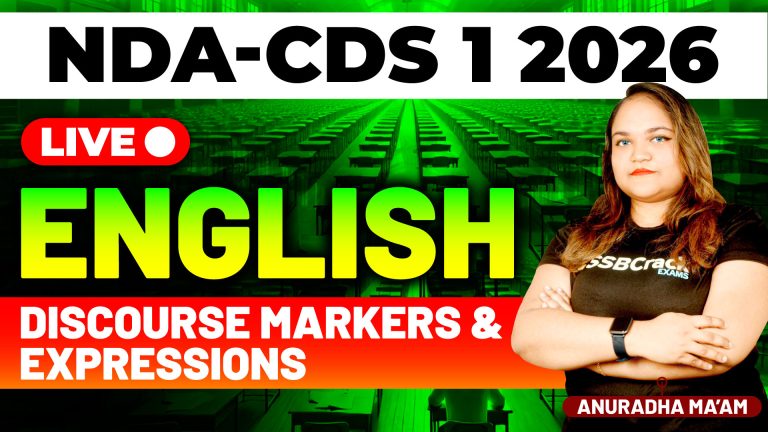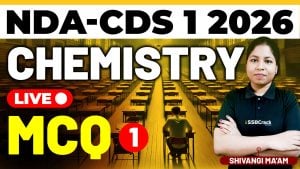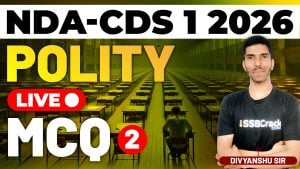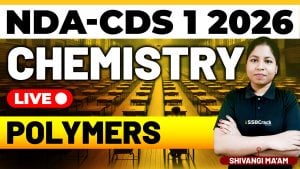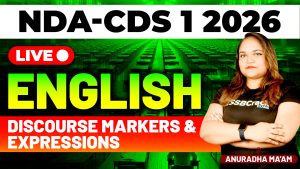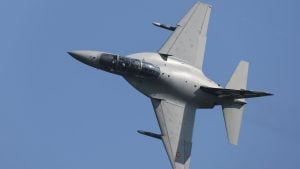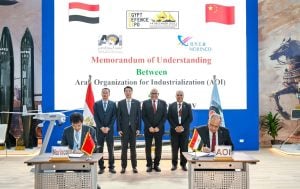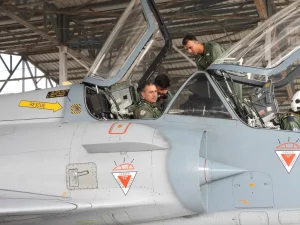Hello Warriors, In this article, we are going to solve NDA 1 2022 Full Mock Test with Most Expected Questions from Maths and GAT Section (GK, GS, and English) with complete solutions [All Sets]. The Union Public Service Commission will be conducting the NDA 1 2022, National Defence Academy, and Naval Academy Examination (I) 2022 at various Centers/Venues all over India on 10th April 2022 (Sunday).
Below is the timetable for upcoming daily live classes, join us live daily at 4:00 PM for NDA 1 2022 Maha Marathon Live Classes
| NDA 1 2022 Current and Defence Affairs Section Live Classes | Date and Time | Videos |
| Maha Marathon Live Classes – 1 | 7 April and 4:00 PM | Click to Watch |
| Maha Marathon Live Classes – 2 | 8 April and 4:00 PM | Click to Watch |
| Maha Marathon Live Classes – 3 | 9 April and 4:00 PM | Click to Watch |
NDA 1 2022 Exam General Awareness Live Classes
| NDA 1 2022 Exam General Awareness Live Classes | Date and Time | Join Us Live |
| History Part 1 | 28 March and 4:00 PM | Click to Watch |
| History Part 2 | 29 March and 4:00 PM | Click to Watch |
| Geography Part 1 | 30 March and 4:00 PM | Click to Watch |
| Geography Part 2 | 31 March and 4:00 PM | Click to Watch |
| Polity Part 1 | 1 April and 4:00 PM | Click to Watch |
| Polity Part 2 | 2 April and 4:00 PM | Click to Watch |
| General Sciences Combined Part 1 A | 4 April and 4:00 PM | Click to Watch |
| General Sciences Combined Part 2 A | 4 April and 4:00 PM | Click to Watch |
| General Sciences Combined Part 2 | 5 April and 4:00 PM | Click to Watch |
| Current and Defence Affairs | 6 April and 4:00 PM | Click to Watch |
| Marathon 1 | 7 April and 4:00 PM | Click to Watch |
| Marathon 2 | 8 April and 4:00 PM | Click to Watch |
| Marathon 3 | 9 April and 4:00 PM | Click to Watch |
Download SSBCrackExams app to access complete study material for 1000 Most Commonly Asked Questions and Maha Marathon Sessions For NDA 1 2022 Exam
Keeping these previous years’ trends & expected question patterns in mind, prepare well to score more than 90 percent in the upcoming NDA Exam. Above is the complete list of 1000 most commonly asked questions and Maha Marathon sessions that you can expect for your upcoming NDA 1 2022 examination, as per the last five years’ NDA exam trends.
Want To Join Nation Defence Academy and Prepare For The NDA Exam?
- You can prepare for NDA 2 2022 and NDA 1 2023
- Take the best NDA Exam Online Course by SSBCrackExams.
- Take the NDA Exam Mock Test Series to boost your prep.
- SSB Interview Online Course [Must Enroll]
PAPER-I
| MATHEMATICS | (Maximum Marks-300) |
| ALGEBRA | Concept of set, operations on sets, Venn diagrams. De Morgan laws, Cartesian product, relation, equivalence relation. Representation of real numbers on a line. Complex numbers—basic properties, modulus, argument, cube roots of unity. Binary system of numbers. Conversion of a number in decimal system to binary system and vice-versa. Arithmetic, Geometric and Harmonic progressions. Quadratic equations with real coefficients. Solution of linear inequations of two variables by graphs. Permutation and Combination. Binomial theorem and its applications. Logarithms and their applications. |
| MATRICES AND DETERMINANTS | Types of matrices, operations on matrices. Determinant of a matrix, basic properties of determinants. Adjoint and inverse of a square matrix, ApplicationsSolution of a system of linear equations in two or three unknowns by Cramer’s rule and by Matrix Method. |
| TRIGONOMETRY | Angles and their measures in degrees and in radians. Trigonometrical ratios. Trigonometric identities Sum and difference formulae. Multiple and Submultiple angles. Inverse trigonometric functions. Applications-Height and distance, properties of triangles. |
| ANALYTICAL GEOMETRY OF TWO AND THREE DIMENSIONS | Rectangular Cartesian Coordinate system. Distance formula. Equation of a line in various forms. Angle between two lines. Distance of a point from a line. Equation of a circle in standard and in general form. Standard forms of parabola, ellipse and hyperbola. Eccentricity and axis of a conic. Point in a three dimensional space, distance between two points. Direction Cosines and direction ratios. Equation two points. Direction Cosines and direction ratios. Equation of a plane and a line in various forms. Angle between two lines and angle between two planes. Equation of a sphere. |
| DIFFERENTIAL CALCULUS | Concept of a real valued function–domain, range and graph of a function. Composite functions, one to one, onto and inverse functions. Notion of limit, Standard limits—examples. Continuity of functions—examples, algebraic operations on continuous functions. Derivative of function at a point, geometrical and physical interpretation of a derivative—applications. Derivatives of sum, product and quotient of functions, derivative of a function with respect to another function, derivative of a composite function. Second order derivatives. Increasing and decreasing functions. Application of derivatives in problems of maxima and minima. |
| INTEGRAL CALCULUS AND DIFFERENTIAL EQUATIONS | Integration as inverse of differentiation, integration by substitution and by parts, standard integrals involving algebraic expressions, trigonometric, exponential and hyperbolic functions. Evaluation of definite integrals— determination of areas of plane regions bounded by curves—applications. Definition of order and degree of a differential equation, formation of a differential equation by examples. General and particular solution of a differential equations, solution of first order and first degree differential equations of various types—examples. Application in problems of growth and decay. |
| VECTOR ALGEBRA | Vectors in two and three dimensions, magnitude and direction of a vector. Unit and null vectors, addition of vectors, scalar multiplication of a vector, scalar product or dot product of two vectors. Vector product or cross product of two vectors. Applications—work done by a force and moment of a force and in geometrical problems. |
| STATISTICS AND PROBABILITY | Statistics : Classification of data, Frequency distribution, cumulative frequency distribution—examples. Graphical representation—Histogram, Pie Chart, frequency polygon—examples. Measures of Central tendency—Mean, median and mode. Variance and standard deviation—determination and comparison. Correlation and regression. Probability : Random experiment, outcomes and associated sample space, events, mutually exclusive and exhaustive events, impossible and certain events. Union and Intersection of events. Complementary, elementary and composite events. Definition of probability—classical and statistical—examples. Elementary theorems on probability—simple problems. Conditional probability, Bayes’ theorem—simple problems. Random variable as function on a sample space. Binomial distribution, examples of random experiments giving rise to Binominal distribution. |
PAPER-II
| ENGLISH | Maximum Marks—200 |
| 1 | Grammar and usage |
| 2 | Comprehension and cohesion |
| 3 | Spotting of errors |
| 4 | Para Jumbling |
| 5 | Fill in the blanks |
| 6 | Synonyms and antonyms |
| 7 | Vocabulary |
| 8 | Cloze test |
| 9 | Idioms and proverbs |
| 10 | Completion of Sentence and para |
| 11 | Sentence correction and improvement |
| GENERAL KNOWLEDGE | Maximum Marks—400 |
| Physics | Physical Properties and States of Matter, Mass, Weight, Volume, Density and Specific Gravity, Principle of Archimedes, Pressure Barometer. Motion of objects, Velocity and Acceleration, Newton’s Laws of Motion, Force and Momentum, Parallelogram of Forces, Stability and Equilibrium of bodies, Gravitation, elementary ideas of work, Power and Energy. Effects of Heat, Measurement of Temperature and Heat, change of State and Latent Heat, Modes of transference of Heat. Sound waves and their properties, Simple musical instruments. Rectilinear propagation of Light, Reflection and refraction. Spherical mirrors and Lenses, Human Eye. Natural and Artificial Magnets, Properties of a Magnet, Earth as a Magnet. Static and Current Electricity, conductors and Non-conductors, Ohm’s Law, Simple Electrical Circuits, Heating, Lighting and Magnetic effects of Current, Measurement of Electrical Power, Primary and Secondary Cells, Use of X-Rays. General Principles in the working of the following: Simple Pendulum, Simple Pulleys, Siphon, Levers, Balloon, Pumps, Hydrometer, Pressure Cooker, Thermos Flask, Gramophone, Telegraphs, Telephone, Periscope, Telescope, Microscope, Mariner’s Compass; Lightening Conductors, Safety Fuses. |
| Chemistry | Physical and Chemical changes. Elements, Mixtures and Compounds, Symbols, Formulae and simple Chemical Equations, Law of Chemical Combination (excluding problems). Properties of Air and Water. Preparation and Properties of Hydrogen, Oxygen, Nitrogen and Carbondioxide, Oxidation and Reduction. Acids, bases and salts. Carbon— different forms. Fertilizers—Natural and Artificial. Material used in the preparation of substances like Soap, Glass, Ink, Paper, Cement, Paints, Safety Matches and Gun-Powder. Elementary ideas about the structure of Atom, Atomic Equivalent and Molecular Weights, Valency. |
| General Science | Difference between the living and non-living. Basis of Life—Cells, Protoplasms and Tissues. Growth and Reproduction in Plants and Animals. Elementary knowledge of Human Body and its important organs. Common Epidemics, their causes and prevention. Food—Source of Energy for man. Constituents of food, Balanced Diet. The Solar System—Meteors and Comets, Eclipses. Achievements of Eminent Scientists. |
| History, Freedom Movement etc | A broad survey of Indian History, with emphasis on Culture and Civilisation. Freedom Movement in India. Elementary study of Indian Constitution and Administration. Elementary knowledge of Five Year Plans of India. Panchayati Raj, Co-operatives and Community Development. Bhoodan, Sarvodaya, National Integration and Welfare State, Basic Teachings of Mahatma Gandhi. Forces shaping the modern world; Renaissance, Exploration and Discovery; War of American Independence. French Revolution, Industrial Revolution and Russian Revolution. Impact of Science and Technology on Society. Concept of one World, United Nations, Panchsheel, Democracy, Socialism and Communism. Role of India in the present world. |
| Geography | The Earth, its shape and size. Lattitudes and Longitudes, Concept of time. International Date Line. Movements of Earth and their effects. Origin of Earth. Rocks and their classification; Weathering—Mechanical and Chemical, Earthquakes and Volcanoes. Ocean Currents and Tides Atmosphere and its composition; Temperature and Atmospheric Pressure, Planetary Winds, Cyclones and Anti-cyclones; Humidity; Condensation and Precipitation; Types of Climate, Major Natural regions of the World. Regional Geography of India—Climate, Natural vegetation. Mineral and Power resources; location and distribution of agricultural and Industrial activities. Important Sea ports and main sea, land and air routes of India. Main items of Imports and Exports of India. |
| Current Events | Knowledge of Important events that have happened in India in the recent years. Current important world events. Prominent personalities—both Indian and International including those connected with cultural activities and sports. NOTE : Out of maximum marks assigned to part ‘B’ of this paper, questions on Sections ‘A’, ‘B’, ‘C’, ‘D’, ‘E’ and ‘F’ will carry approximately 25%, 15%, 10%, 20%, 20% and 10% weightages respectively. |

How to prepare for the NDA Exam?
- Take the best NDA Exam Online Course by SSBCrackExams.
- Take the NDA Exam Mock Test Series to boost your prep.
- To Crack SSB Interview ENROLL NOW: SSB INTERVIEW ONLINE COURSE
